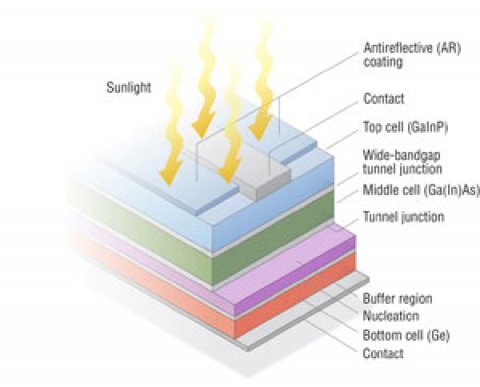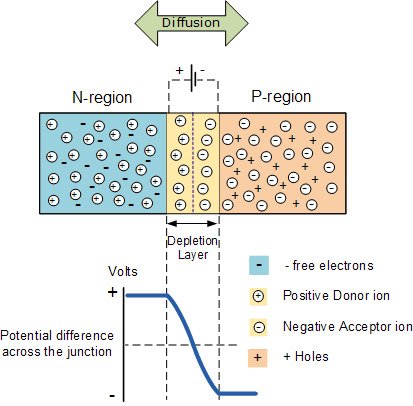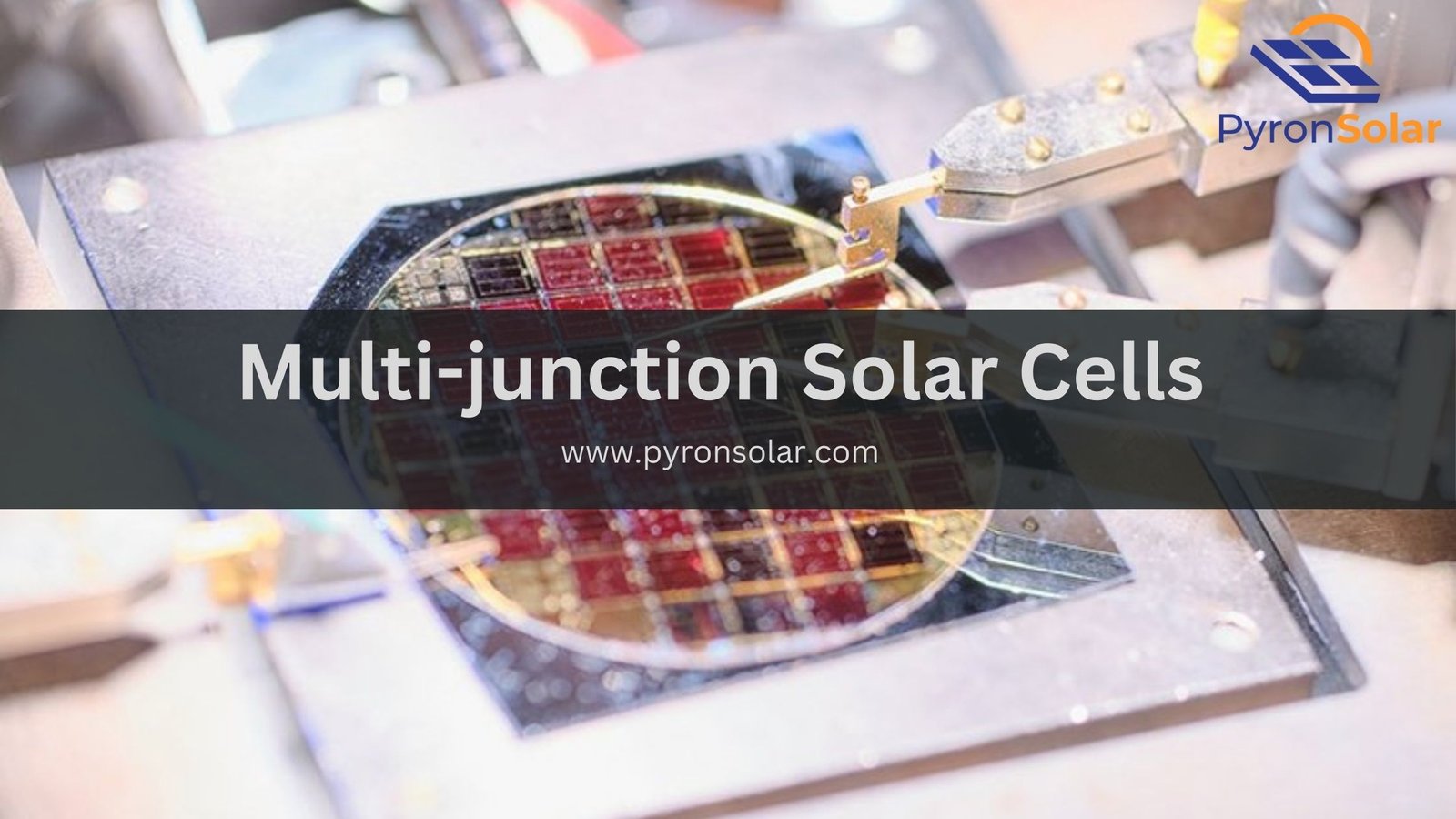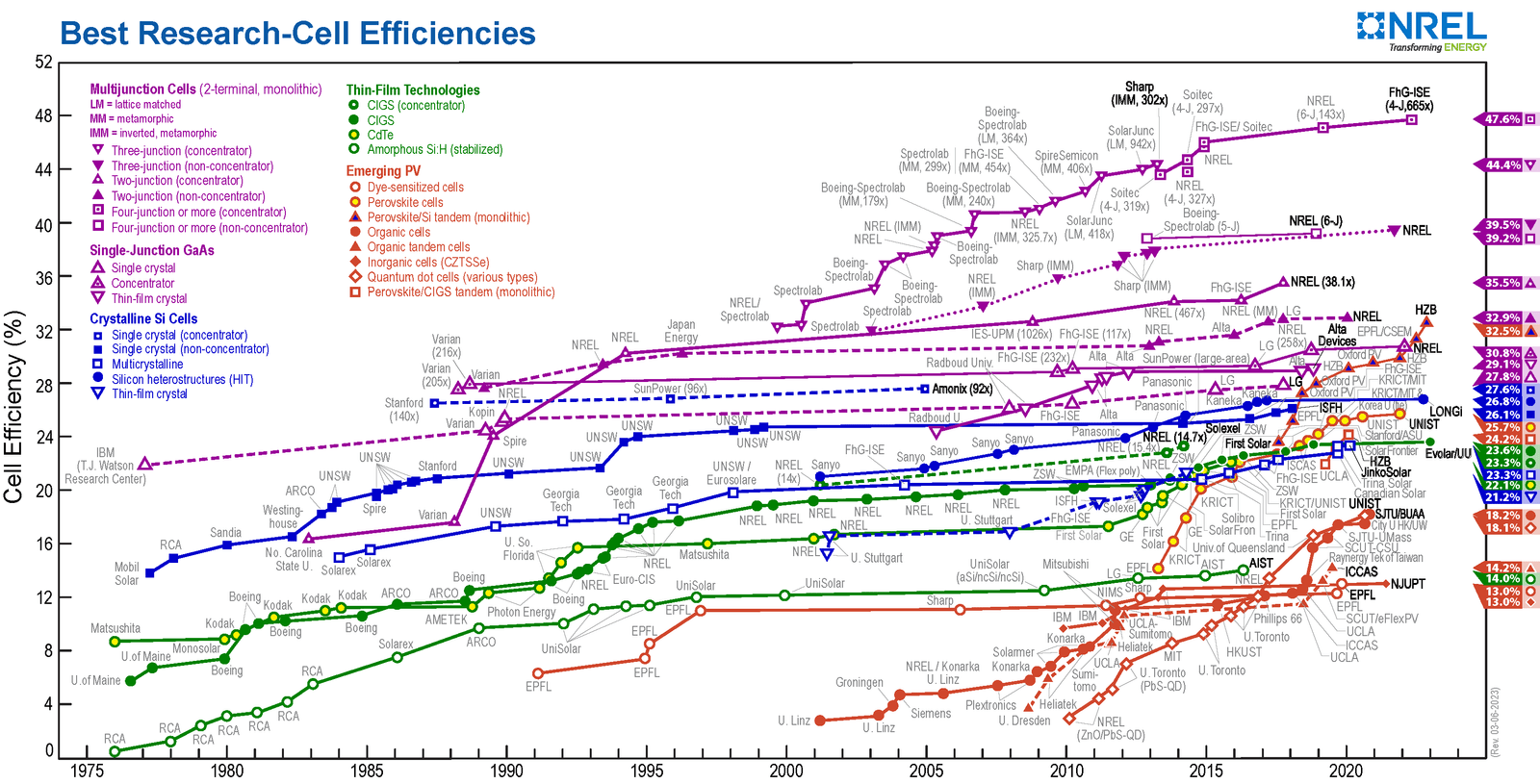Solar cells are the devices that convert the sun’s radiation into electricity through the physical and chemical phenomenon known as the photovoltaic effect.
In early 1839, the evolution of solar cells began by observing the photoelectric effect on certain materials like “Mono” grown through the Czochralski process and “Poly” through directional solidification. In 1954, the Bell Laboratories invented the modern solar cell. However, it was in 1883 the American inventor Charles Fritts made the first solar cells through selenium. Over the years, unique technologies have been prepared through different materials other than silicon such as Perovskites, Cadmium Telluride (CdTe) and Copper Indium Gallium Diselenide (CIGS).
Multi-junction solar cells bring together different absorbers with varied band gaps to decrease two principle loss methodologies taking place in a single-junction solar cell namely — thermalization and sub-bandgap loss. Also, these Multi-junction solar cells enable the cell to take up a more expansive range of wavelengths to generate more electricity. Therefore, it achieves a higher efficiency rate of more than 46%.
Your thirst to gain knowledge about multi-junction solar cells will be satisfied by knowing interesting facts about their working procedure, advantages, and disadvantages. Most of the time you might confuse yourself with single-junction solar cells, but you need to know that the materials and price completely vary from the multi-junction.
Moreover, you can have a clear idea that if the lightweight multi-junction solar panels are available commercially or not. Also, it is important to know whether the manufacturing process is complex and costly or not by understanding the constraints for materials and fabrications. In case you want to know in detail how solar panels are made.
What are Multi-junction Solar Cells?

Multi-junction Solar Cell Structure. Image Source: www.energy.gov
Multi-junction solar cells are a type of Tandem Solar Cells that are optimized to capture varying sunlight frequencies. The multiple P–N junctions are made from semiconductor materials like Indium Gallium, Germanium, and Gallium Indium Phosphide to respond to specific wavelengths.
They are completely different from the single-junction solar cells that consist of only one P-N junction made of doped silicon and have a lower theoretical efficiency (33.16%) than multi-junction ones (above 45%).
How do Multi-junction Solar Cells Work? A Comparison With Traditional Solar Cells

Image Source: Electronics Tutorials
To understand the working procedure for multi-junction solar cells, you need to know about traditional solar cells.
Typically, a traditional (PV) solar cell consists of a semiconductor material doped with silicon that features a P-N junction in which the P-type (positively charged) containing excess holes and the N-type layer (negatively charged) consisting of electrons meet each other.
An N-type junction has a high concentration of electrons and the P-type has a lower concentration. The loose electrons flow through the P-N junction between the semiconductor layers to generate electricity. In other words, the electrons on one side of the junction (N-Type) move into the holes of the other junction side (P-Type).
Single-junction solar cell uses a single semiconducting material for P-N junction to allow the flow of electrical current, absorb a wide range of wavelengths and improve overall efficiency conversion rate.
Multi-junction solar cells consist of more than one P-N junction where each semiconductor material produces an electric current in response to different wavelengths of sunlight that enhances the conversion rate of efficiency. Similar to silicon solar cells, the multi-junction generates electricity through the photovoltaic effect.
The multiple layers are arranged in descending order, thereby creating a “photo-sorting” effect with the largest band gaps on the top and the smallest one at the bottom. The High-energy photons get absorbed more on the top rather than the bottom layer. In simpler terms, the structure of Multi-junction solar cells includes a top cell with a larger bandgap of 1.9 eV, like gallium indium phosphide (GaInP). A middle cell such as gallium arsenide (GaAs) with a medium bandgap of 1.4eV and a bottom cell like Germanium (Ge) with a band gap of 0.67 eV.
The individual semiconductor materials, known as subcells are stacked in series to achieve higher performance.
Advantages of Multi-Junction Solar Cells
These are the two main advantages of Multi- Junction solar cells you need to know in detail:
- Higher Efficiency
- Light Weight
Higher Efficiency
Image Source: www.nrel.gov
The maximum efficiency of a multi-junction solar cell is over 45% and according to the research of National Renewable Energy Laboratory (NREL), the higher efficiency was achieved upto 47.1 % in 2019. Whereas, in space applications for powering communication satellites, it had an efficiency of 34.2%.
- Multi-junction solar cells have higher efficiency than single junction due to the following reasons:
- Multiple layers of semiconductor materials produce electric current by responding to varying sunlight wavelengths.
- Traditional crystalline silicon (c-Si) solar cells cannot attain a maximum efficiency of more than 26.81%.
- Can perform well in low sunlight conditions.
- Higher Lifespan
- Requires less space by producing more electricity for the same amount of sunlight
You can also learn more about efficiency of solar panels.
Light Weight
Multi-junction solar cells have a compact size and lower weight than their counterparts by having multiple bandgaps due to the various semiconductor materials and layering techniques used in manufacturing.
Mainly, the radiation resistance of the multi-junction solar cells in space can be achieved by satisfying the lattice and bandgap matching conditions. Particularly, in space per wattage of energy matters and the demand to generate huge power from small and lightweight devices becomes crucial which includes satellites, spacecraft, and high-concentration photovoltaic systems.
Disadvantages of Multi-junction solar cells
On the other hand, there are two major disadvantages of multi-junction solar cells that you need to know in detail to make appropriate decisions:
- Complex and Costly Manufacturing Process
- Material and Fabrication Constraints
Complex and Costly Manufacturing Process
The complex manufacturing process results in the costly production expenditure of multi-junction solar cells with a cost of $2.50 to $4.00 per watt, which is higher than the conventional solar cells with $0.20 to $0.50 per watt.
Material and Fabrication Constraints
Due to the requirements of lattice matching and proper bandgap alignment, there are constraints for the sourcing of materials and fabrications. As a result, highly expensive or low abundant materials such as gallium arsenide (GaAs) and indium phosphide (InP) are used which can influence the overall cost of multi-junction solar cells.
Single Junction vs Multi Junction Solar Cells
An interesting comparison of Single and Multi-Junction solar cells can be drawn by considering these important factors such as:
- Efficiency
- Materials
- Price
Efficiency
Multi-junction solar cells are superior in terms of efficiency above 46% under concentrated sunlight than single-junction solar cells with 30% efficiency. At the same time, the lower cost and best infrastructure enhance the preference for single junctions for portable and large-scale power system applications.
Materials
Single-junction solar cells use single semiconductor material of P-N junction like silicon. Whereas, the multi-junction solar cells use different semiconductor materials like Gallium Indium Phosphide (GaInP) and Indium Gallium Arsenide (InGaAs) and Germanium (Ge).
However, single-junction solar cells are environmentally friendlier. This is because the multi-junction solar cells have a lower lifecycle than the standard cells and use highly toxic substances and energy during the manufacturing process such as Arsine and Phosphine.
Price
The average price of a single junction solar panel ranges between $1 and $1.50 per watts. It means that a 400W panel would cost around $400 and $600 approximately. Moreover, the price of solar panels has been declining over the years due to technological advancements, market demand and government policies. This trend in the solar industry aims to achieve a larger production scale globally.
Unlike single junctions, multi-junction solar panels aren’t commercially available in the market due to their high production costs and continuing research and development.
Can I Install a Multi-junction Solar Panel?
No! The multi-junction solar panels aren’t commercially available for widespread installation due to their high cost and complicated manufacturing process. Though they have higher efficiency than typical solar cells, many practical challenges restrict you from installing them, and they aren’t available for purchase in the market.
Ray is an avid reader and writer with over 25 years of experience serving various domestic and multinational private and public energy companies in the USA.


